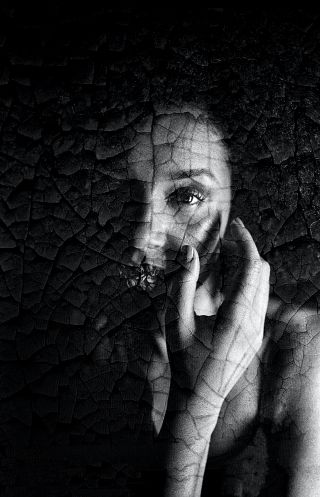Identity
Do Each of Us Contain Multiples?
Meet the plural community.
Posted November 17, 2023 Reviewed by Tyler Woods
Key points
- Some evidence suggests that the unity of the self might be an illusion.
- Perhaps each human being is in some sense "many."
- The plural community holds that multiplicity shouldn't be shunned, but worked with and embraced.

I've always thought there was only one “person” in my head: me, Justin Garson. I tend to think and act in ways that are pretty consistent and, I suppose, predictable to others. I've never thought there were multiple selves inside of me.
But what if I'm deeply mistaken? What if being “multiple” is the natural state of the human mind, one that some of us manage to deny? I interviewed Elizabeth Schechter, a philosopher of cognitive science at the University of Maryland, College Park, about her research on split-brain cases, dissociative identity disorder, and the community known as plurals. And I asked what all of this means for human nature.
Justin Garson: Could you tell me a little about your work and how you became interested in the theme of multiple selves?
Elizabeth Schechter: Initially, my interest was in the famous split-brain cases, in particular. These are cases in which the corpus callosum was severed in adult human beings as a treatment for epilepsy. Afterward, some split-brain subjects acted in ways that seemed to be the product of two distinct conscious agencies or intelligences. Some readers then pushed me to investigate dissociative identity disorder (DID). In the course of that investigation, I discovered the community of plurals.
JG: There’s a long-held belief, certainly in the West, that the self is one singular, unified entity. But based on your research, you've come to question that belief. Could you tell me how you came to think each of us may be many?
ES: I disagree, in part, with your premise. It’s true that in the West, there’s a notion of a soul that has to meet its fate in the afterlife, and it has to do so with unity. It's not as if the kind part of you gets to go to heaven and the selfish part has to go to hell. That said, the notion that the self is split or divided also has a venerable tradition in philosophy and popular culture. Jekyll and Hyde is the most famous example, but more recently, you see it in films like "Fight Club," "Black Swan," and "Imposter."
I call these sorts of stories “duality myths,” and I think they grip people precisely because underneath our insistence on the unity of the self, there exists simultaneously this idea that people are divided and dual in some way. That we have our moral, civilized selves, and then a more primitive or animalistic and chaotic self, or a public self and a hidden, private self.
JG: I always thought films like those were meant to depict serious mental illness, and the reason we’re fascinated with them is that we’re fascinated with mental illness. But you think it’s because we somehow recognize ourselves in them?
ES: I think that people are mostly fascinated by themselves. They're fascinated by things that actually do resonate for them. I think if someone is just purely “weird,” for example, people are not necessarily that interested in them. It's when they see something they dimly recognize in themselves or in people they know, but that is suddenly presented in stark and exaggerated form.
JG: I want to turn to your work on dissociative identity disorder. Could you tell me a little bit about this?
ES: Dissociative identity disorder (DID)—formerly multiple personality disorder—is a dissociative disorder characterized by disruptions in agency, memory, and the sense of self. The traditional psychiatric understanding has been that being multiple is itself pathological and that the ultimate goal of DID treatment is to allow someone to identify and live as a single, multifaceted person.
What we've seen changing over time is that people diagnosed with the condition, while they often do want treatment for various psychological issues (for instance, for memory problems or PTSD), deny that multiplicity per se is pathological. Multiplicity itself, they think, is neutral or even beneficial—something to be worked with and embraced, rather than transcended or overcome. This is the view of the plural community.
JG: What is the plural community?
ES: The term “plural” refers to any human being who says things like, “I'm one of multiple people in this brain.” Many use the clinical term “alters” to describe these alternate personalities, but plurals themselves tend to prefer non-clinical terms like “headmates.” In many cases, these headmates seem to be the product of trauma, but some are the product of tulpamancy, and headmates may have other sources as well.
JG: What is tulpamancy?
ES: It’s a set of practices that are undertaken with the aim of creating a separate sentient being inside one’s head.
JG: What does your research with DID, or plurals, imply for those of us who don’t usually think of ourselves as “many”? Do you think this is a condition that all of us share in some way, but that we don’t confront? Is it part of human nature?
ES: Well, at a minimum, obviously, it proves what is possible, right? So, it does seem to show that there's some degree, or was at some point earlier in our lives, of potential for multiplicity in all of us. This idea is backed up by the most prominent contemporary theory of DID, known as “structural dissociation theory.”
This theory holds that we’re all born with pretty distinct and dissociated emotion-cognition-action systems. So, according to this theory, say, your toddler has something like precursor DID. And this is something that many of us who’ve raised young kids are familiar with. Sometimes your toddler is fine, and then within 10 seconds, they're hysterical, and you cannot reason with them. Then, as soon as they're out of it, you want to talk to them about it but they can't tell you anything about it, and they might not even remember it.
JG: As a parent, I remember those days very well.
ES: According to this theory, part of the work of parenting is teaching children to integrate these systems so that after they calm down, they can look back and remember what they were thinking and feeling. What happens in DID, according to this theory, is that the systems don't become integrated. They each individually become more and more psychologically sophisticated, so that each eventually develops its own psychological self-consciousness and identity. That theory, I think, is pointing to something that's in some sense there within all of us.
JG: Do you think that, if there were a relatively simple and foolproof way of creating tulpas in oneself, there would be good reasons to do it?
ES: On the one hand, many plurals I’ve talked to say that their tulpas have helped them talk through difficult issues—like the world’s most available therapists—or just have given them companionship that they really appreciate. On the other, as one plural expressed to me, it can be a gigantic commitment. This plural said something like, “I just don’t think most people are prepared to do that,” and I certainly wouldn’t be. I already don’t feel that I have enough time to do what I want to do!
Facebook/LinkedIn image: Ground Picture/Shutterstock
References
For more information and resources about plurality, see The Plural Association and Pluralpedia.




